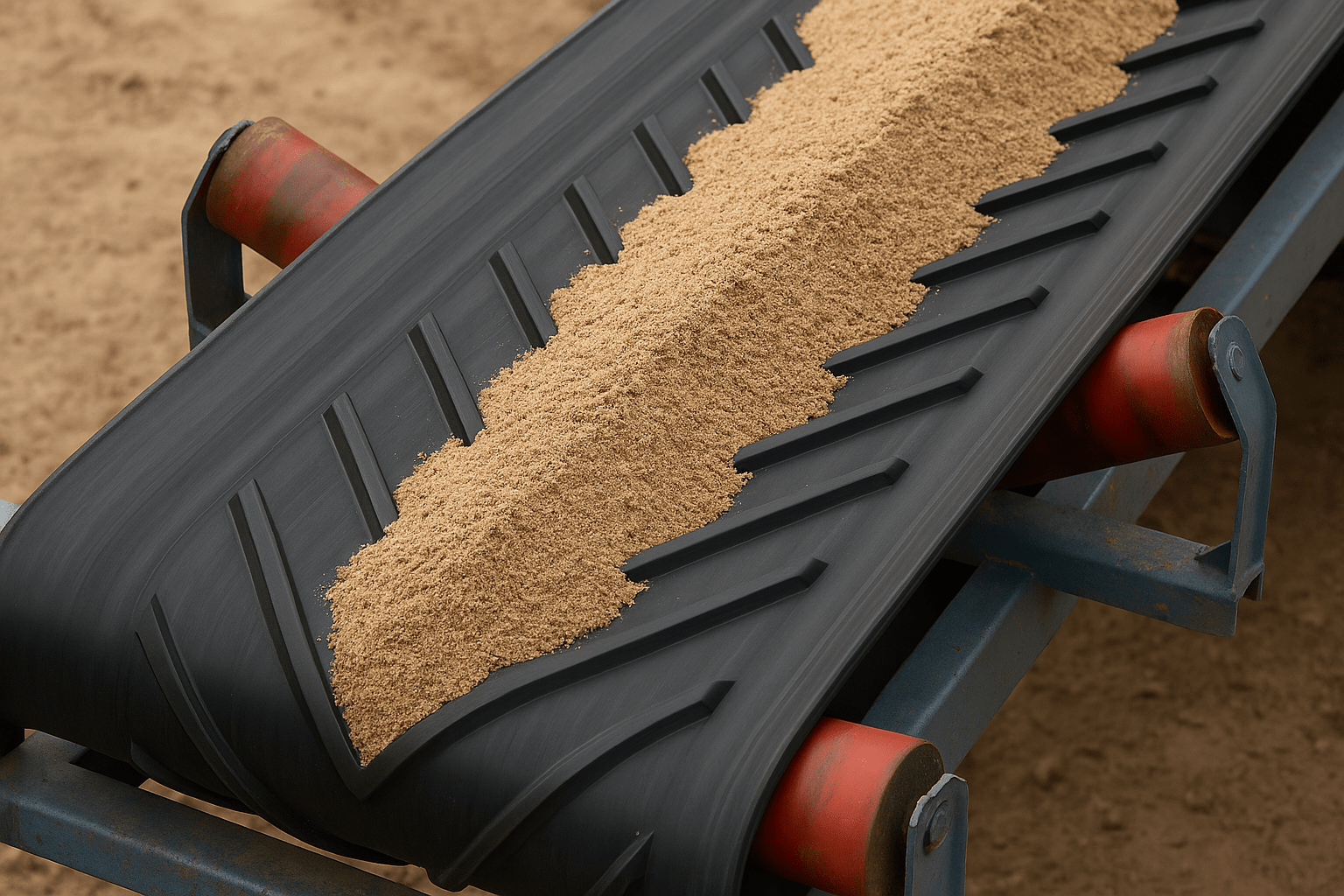Chevron conveyor belts are essential for transporting bulk materials on inclined surfaces. This comprehensive guide explores their features, applications, advantages, and how to select the right supplier for your industrial needs.
Introduction to Chevron Conveyor Belts
A Chevron Conveyor Belt is designed with a distinctive V-pattern on the top cover to prevent material slippage during transportation. This pattern makes it particularly effective for conveying bulk materials up steep inclines, ensuring productivity and safety in industries like mining, agriculture, construction, and recycling.
The unique design of Chevron belts enables them to transport a wide range of materials, from loose sand and gravel to packaged goods. Their robust structure and specialized rubber compounds make them durable and resistant to wear and tear, which is critical for high-demand operations.
Why Are Chevron Conveyor Belts Important?
The need for high-efficiency material handling systems has never been greater. Conveyor belts with Chevron patterns ensure that material stays in place during upward transportation, reducing spillage and operational downtime. Businesses in heavy industries rely on these belts for cost-effectiveness and reliability.
Unlike flat belts, which may cause material slippage on steep inclines, Chevron belts provide additional grip. This extra grip minimizes energy consumption and mechanical strain on the conveyor system, extending the life of the equipment and reducing maintenance costs.
Applications of Chevron Conveyor Belts
Chevron belts are widely used across industries because of their versatility and ability to handle challenging conditions. Some common applications include:
- Mining Industry: Transporting coal, ores, and minerals on inclined surfaces.
- Agriculture: Moving grains, seeds, and other agricultural products.
- Construction: Carrying sand, gravel, and cement to higher ground.
- Recycling: Handling bulk waste and recyclables efficiently.
Every industry that involves inclined transportation of bulk material can benefit from Chevron belts. They ensure efficiency and minimize product loss during operations.
Features of Chevron Conveyor Belts
The performance of a Chevron Conveyor Belt depends on several key features:
- Chevron Pattern: V-shaped cleats provide additional grip and prevent slippage.
- Durable Rubber Compound: Resistant to abrasion and tearing.
- Reinforced Fabric: High-tensile strength ensures load-bearing capability.
- Variety of Profiles: Available in multiple designs to suit different inclines and material types.
These features make Chevron belts an indispensable part of any material handling system that requires efficient incline transportation.
Advantages of Chevron Conveyor Belts
Investing in Chevron belts provides several advantages over traditional flat belts:
Improved Material Handling: Reduces spillage and improves throughput on inclines.
Cost Efficiency: Minimizes maintenance costs and energy consumption.
Versatility: Suitable for various materials and industries.
Durability: Long-lasting under heavy-duty operations.
These benefits make Chevron belts a preferred choice for industries that value operational efficiency and reliability.
How to Choose the Right Chevron Conveyor Belt
Selecting the right Chevron belt involves considering several factors:
- Incline Angle: Different cleat patterns are suitable for specific angles.
- Material Type: The size, weight, and consistency of the material being conveyed.
- Environment: Temperature, moisture, and chemical exposure conditions.
- Belt Width and Strength: Based on load capacity and conveyor system design.
Consulting with experts or trusted Chevron Conveyor Belt suppliers ensures you get the right product for your specific requirements.
Top Qualities of Reliable Suppliers
Finding a reliable Chevron Conveyor Belt suppliers is crucial for long-term success. The best suppliers offer:
- High-Quality Products: Verified for performance and durability.
- Customization: Ability to tailor belts to specific project needs.
- Technical Support: Expert advice for installation and maintenance.
- Competitive Pricing: Fair prices without compromising quality.
Choose a supplier who understands your industry and provides end-to-end solutions, from selection to after-sales service.
Common Challenges and How to Overcome Them
While Chevron belts offer numerous benefits, businesses may face certain challenges such as misalignment, excessive wear, and belt slippage. These issues can be mitigated through:
- Regular maintenance and inspection.
- Using proper tensioning systems.
- Selecting belts designed for the specific operating environment.
Working with experienced suppliers ensures you receive not just products but solutions to these challenges.
FAQs About Chevron Conveyor Belts
What makes Chevron belts different from flat belts?
The V-pattern cleats provide additional grip, preventing material from sliding back on inclines.
Can Chevron belts handle wet materials?
Yes, they are designed to transport both dry and wet materials effectively without slippage.
How long does a Chevron Conveyor Belt last?
With proper maintenance, these belts can last several years, depending on usage and operating conditions.
Are there different types of Chevron patterns?
Yes, multiple profiles are available for varying incline angles and material characteristics.
Where can I buy high-quality Chevron Conveyor Belts?
You can purchase from trusted Chevron Conveyor Belt suppliers who provide premium products and technical support.
Conclusion
The Chevron Conveyor Belt plays a critical role in industries that require efficient material transportation on inclines. Its unique design, durability, and ability to handle diverse conditions make it indispensable for mining, agriculture, construction, and recycling sectors. Partnering with experienced Chevron Conveyor Belt suppliers ensures you receive high-quality products, tailored solutions, and expert guidance for long-term operational success.




